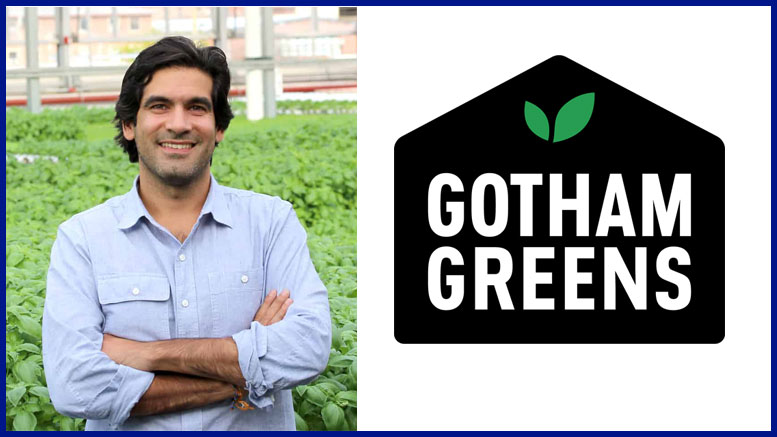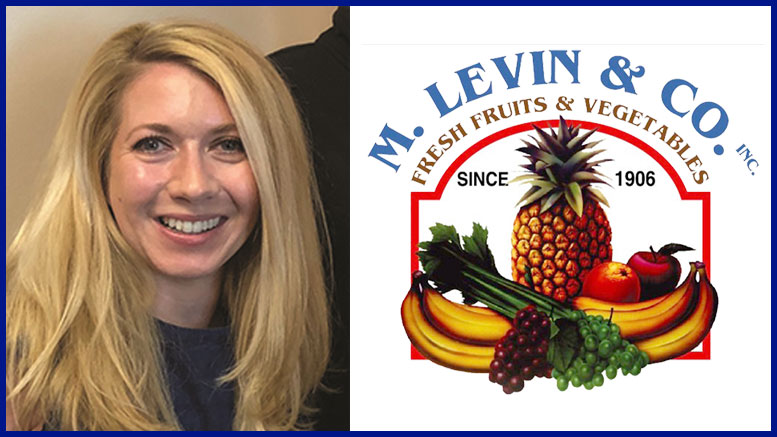Members of the trade share their thoughts on this most unusual inflection point.
Originally printed in the October 2021 issue of Produce Business.
INTRODUCTION BY JIM PREVOR — EDITOR-IN-CHIEF
As I thought of what to write about the situation that we, as an industry and as a people, have gone through during our interaction with COVID-19, my first inclination was to look at the experience as a kind of Great Collaboration. Early in the pandemic, we interviewed Michael Muzyk of Bronx, NY-based Baldor, and he told us of how his company had pivoted to survive the pandemic.

One of the examples he gave was how his company, flush with warehouse capacity and trucks when restaurants closed down, came to the aid of Acme, whose own warehouses and trucking capabilities were overwhelmed by the need to handle pandemic supplies and consumer hording of canned goods and other products.
Efforts such as these were inspiring, and similar stories were happening throughout the industry. Yet as useful, indeed inspiring, as many of these efforts were, they seemed more improvisational, fitting the moment, not rewriting the future.
It is very difficult to ascertain precisely how the future outside of the produce industry will be redirected by this pandemic experience. The problem is that we mostly did things with good reason, and even knowing the short-term costs of many long-term decisions, it is not obvious we will change very much.
In other words, we were short of intensive care facilities, and we learned that the existence of a contagious pandemic led many elective procedures to be delayed, both because hospitals redirected resources and because people were afraid to expose themselves to COVID-19.
We will probably never really know how many people died or will die in the near future because of a delay in the diagnosis of their cancers, heart diseases or other ailments.
Yet, what will knowing this actually mean? Will we spend trillions to build and equip extra hospitals, train extra doctors and nurses and have them sit idle, providing spare capacity for the next pandemic, an event that might come in a 100 days or 100 years? This seems unlikely.
THE FUTURE IS NOW
The best way to think of the impact of the pandemic is not so much the memory of the way we have gotten through it, but to look at the future with the notion that the pandemic greatly accelerated many of the trends and technologies that were already in place to rise in the years ahead.
In a societal sense, we saw this most obviously in the rapid development under President Trump’s Operation Warp Speed of the new mRNA vaccines (Pfizer and Moderna are both of this type). This technology was not invented just for this instance. In fact, it was already projected to help vaccinate against many diseases, but COVID-19 made development a priority.
The US government provided almost unlimited resources to accelerate the innovation, and now the world will be forever changed as the technology is applied to other diseases. Indeed, shocking as it sounds, it is entirely possible that despite the heavy COVID-19 death toll, the acceleration of mRNA vaccines may in the fullness of time save more lives than the pandemic caused to be lost.
For the industry, the impact of change is still undetermined. Certainly it seems likely that online ordering, having been experienced by so many, will be higher than it would have been otherwise. In this sense, as with mRNA vaccines, the pandemic is best seen as The Great Accelerator, taking ideas and technology that have been stewing and moving us forward into the future. So, the move to online shopping, which might have taken 10 years to develop instead took 10 months.
Change is complicated though. One sector booming now is urban agriculture. Shortages of drivers, rocketing freight rates… it all seems to suggest that our urban greenhouses and other formats have found their moment.
But the future is hard to predict. Perhaps high freight rates will accelerate autonomous trucking. If produce can be grown in ideal growing areas and shipped in vehicles that move 24 hours a day without drivers, perhaps the competitive advantage of local farms might not turn out to be such a great advantage, and growing on low cost land or where cheap labor or water is readily available might turn out to be the winning formula.
INDUSTRY VOICES HEARD
The produce industry is unlikely to thrive unless the country does. Unlike the flu pandemic just after World War I, the technology exists now so that many people could work or study from home. The wealth of the country is so great that we could pay trillions for all kinds of support systems without flinching. Yet, whether all this will produce a more enlightened, intelligent and productive populace is uncertain. No society has ever had wealth on the scale of 21st century America, yet society seems torn by racial and political tensions.
It is, however, always good to think of Adam Smith at times such as this. A young aide once advised, “If we go on at this rate, the nation must be ruined.” Smith replied: “Be assured, my young friend, that there is a great deal of ruin in a nation.”
The same sentiment can be said about our industry. We asked members of the trade to share their reflections on this most unusual period. Many shared their voice, and we will post many in their entirety online, but we thought we would lay out here some particularly thoughtful pieces.
In reading through the many profound and interesting comments we received, it was most interesting to see how its impact affected all of us on a global scale but also each of us on a personal scale. So Tracie Levin told us of the struggles of a young working mother (Editor’s Note: Please see page 101 of this issue, where we devoted our Wholesale Marketing column to Tracie’s comments) and Beth Frith as a mother of adult children.
Some people focused on their own industry, so Viraj Puri saw how it played out for local growing operations, and some, such as John Stanton, saw the broader perspective.
With such a wise collection of thinkers, we find ourselves optimistic regarding the post-pandemic future of the produce industry. We publish excerpts here, but you can find more complete statements at www.ProduceBusiness.com.
We express our thanks to each contributor.
KIM CHACKAL
Director, Sales & Marketing, Equifruit

Equifruit sales of Fairtrade bananas increased substantially during the early parts of the pandemic, and continue to soar. What we’ve seen is an increased appetite for ethically sourced produce with a clean supply chain. Equifruit has had a 100% commitment to Fairtrade sourcing since day one in 2007.
In addition, it was clear to our team that we needed to invest in digital innovation. We executed a full rebrand through an agency called TUX, and began to prepare for post-pandemic business. In addition to new packaging, we launched a new website, new social media strategy, designed better POS material and invested in QR codes and digital sell sheets. We realize that we can achieve our goal of ‘Global Fairtrade Banana Domination’ from the comfort of our homes. We simply need the right sales tools and a passionate team.
VIRAJ PURI
Co-Founder and CEO, Gotham Greens

“On the heels of our 10th anniversary in operation, Gotham Greens is on track to achieving our biggest year ever with exciting momentum heading into 2022. We are committed to bringing our brand of local and sustainably grown salad greens and herbs, along with our line of fresh dressings, dips and cooking sauces, to more consumers up and down the West Coast and in more regions in the future.
New York-based Gotham Greens, one of the largest and fastest growing indoor farming brands in the United States, continues to expand its grocery, natural channel and e-commerce footprint and retail sales. Since January 2021, Gotham Greens has expanded into more than 800 additional retail stores, bringing its total store count to approximately 2,800 doors nationwide with 62% year-over-year growth.
Gotham Greens continues to expand its national greenhouse network to meet increased demand. The company’s ninth hydroponic greenhouse, the first phase of a 10-acre project located near the University of California-Davis, is set to open next month. Gotham Greens produce will be widely available throughout California including national and regional retailers including Whole Foods Market and Raley’s.
We were founded in 2009 with a simple mission: to reimagine how and where fresh food is grown. Over the past decade, Gotham Greens has grown from a single hydroponic rooftop farm in Brooklyn, NY, to a multi-state greenhouse operator with nine greenhouses across six states and nearly 400 employees. Along the way, we were one of the first leaders to demonstrate the important role that indoor farming plays in the creation of a more sustainable and resilient food system.
The COVID-19 pandemic exposed the fragility of our nation’s food supply chain. Stay-at-home orders led to consumer spending habits shifting from foodservice to retail, including a surge in ecommerce sales. The traditional supply chain could not react in time, and food was left stranded to rot at every point. Farmers were forced to destroy tens of millions of pounds of fresh food that they could no longer sell, burying their produce and plowing it back into the soil. The disruption to the food supply chain led to food insecurity and exacerbated the $285 billion food waste problem in our country.
Indoor farming enables the decentralization of supply nodes for certain crops and thus distributes risk of supply chain disruption. Through the design of indoor growing facilities and new growing processes such as hydroponics, we can grow produce year-round across the country, creating localized supply nodes that minimize the impact of any individual supply disruption. For example, Gotham Greens’ short supply chain proved instrumental during the pandemic. While other companies could not ship lettuce across the country to New York, Gotham Greens continued to harvest and distribute its fresh local produce, helping keep shelves stocked at local grocery stores.
Increased investment in indoor farming will help bolster the health and resilience of our nation’s agriculture sector and food supply chain. In time, technology advancements developed for indoor farming will likely create spillover benefits for outdoor growers, who can adapt and adopt many of these precision agriculture techniques.
BRUCE PETERSON
Owner, Peterson Insights

“Many characterize the changes that we see in the produce industry as a reaction to the pandemic. I would suggest that the pandemic exposed activities in both procurement and shopping behavior and accelerated the evolution of the retail industry in general and the role fresh fruits and vegetables have played in the food supply chain.
I’ve suggested that for years, there are four major challenges that have been facing the produce industry: food safety/traceability; labor/immigration; transportation; and water management.
I would suggest that the pandemic exponentially increased the exposure to these challenges, and the rate of response that the pandemic caused needed to accelerate exponentially as well.
Regarding food safety/traceability, the produce industry has been coming under pressure since the spinach crisis in the ’90s. We’ve seen a dramatic increase in packaging, as consumers feel less comfortable handling bulk products. We’ve seen an increase in juice and further processed produce. We’ve seen external treatments that artificially increase shelf life. We’ve seen an increase in organic sales.
All of this stems from a perception that conventionally grown, fresh fruits and vegetables, may have a degree of hazard that causes consumers to think twice about how they obtain their nutritional needs. And when a national viral outbreak reminds people how carefully they need to examine all of their lifestyle habits, this simply accelerates the issue.
And then, add this to the consumer psyche — it is no longer necessary to shop at a store to get your needs! Heaven forbid, you should expose yourself and your family to a germ-infested, unsanitary environment. Just order from home and have it delivered. Omnichannel retailing has increased exponentially and will continue to do so. This is not a good thing for the produce industry for a multitude of reasons, but not the least of which is labor.
Labor issues have been increasing for many years, and much of it has to do with outdated immigration policy. But much of it also has to do with the fact that baby boomers had fewer children than their parents, and that the Gen Xers are having children later. All of this became exposed when people stayed home, or even dropped out of the workforce, because of the pandemic.
Robotics and “thing to thing” transactions have accelerated and will continue to do so. But at retail, existing labor budgets have been redeployed. At one time, you might have five people working in the produce department. But now, you need three of those people to pull online orders. Self checkouts and checkout-free stores are a direct response to labor challenges and will continue to proliferate.
Transportation is another area that labor challenges have been impacting. The industry reliance on individual tractor/trailer transportation for supply chain fulfillment has been an Achilles’ heel for decades. And when you couple the aforementioned labor issues with increasing oil prices, you have a real problem. And throw in overseas freight challenges, and now you have a real dilemma. You have every product commodity, both general merchandise and food, fighting for limited transportation capacity. The pandemic merely accelerated and exposed the flawed supply chain.
Water management is the only major issue that was not directly accelerated by the pandemic — but the pandemic exposed how significant water management is needed. This problem is not going away in the near future and the produce industry needs to finally take a hard look at where and how they will get the water necessary to keep up with their production needs.
So again, I don’t believe that the pandemic is the cause for the challenges the industry faces today — but it did expose and accelerate the response. And most of the responses are here to stay.”
DR. JOHN L. STANTON
Chairman and Professor of Food Marketing St. Joseph’s University Philadelphia, Pennsylvania
Founder and Editor (retired), Journal of Food Product Marketing
European Retail Academy, Hall of Fame
Private Label Manufacturers Association Hall of Fame

“The pandemic’s confinement has led families to rediscover cooking. While it may not go back to the ’50s where almost every meal was home-cooked, we can expect to see more meals prepared at home, especially by younger families. This will likely lead to more fresh products used.
More families used online shopping than before the pandemic hit, either through necessity or novelty. We can expect online shopping to continue at a rate that is faster than if we had not had our families sequestered at home. Many discovered that they thought “only they could pick the best produce.” And many are surprised that the fresh products they received were very acceptable.
Nothing ever reverts back, as the COVID-19 year will leave an indelible mark on how we eat and shop. Everything morphs into a new behavior that may, to some extent, have elements of pre-COVID life. Remember, the post-COVID age will also have a new generation of adults that will have their mark on food consumption and purchase, whether or not there was a pandemic.”
CINDY HANAUER
Educator/Writer/Strategist/Futurist for the Floriculture Industry
Founder/CEO of Grand Central Floral

“The onset of COVID-19 was frightening for everyone, including the front and back lines of the floriculture industry. It took a pandemic such as this one to remind us of the importance of flowers in our own minds, the minds of our suppliers and the minds of our consumers. Flowers connect. Flowers relay feelings. Flowers cheer us on. Flowers mourn with us.
As acclaimed artist Corita Kent so aptly pronounced, “Flowers grow out of dark moments.” And while there continue to be “dark moments” around us, the floriculture industry has gained resiliency and a new awakening of its importance. Despite ongoing transportation and labor challenges, floral retailers and suppliers are reporting their highest revenue trajectory ever.
Equally as progressive, social distancing requirements have driven consumers to technology at a greater speed than ever before. Online ordering, drop-shipping, curbside pickup, and home delivery were once hovering on the perimeter, looking in. Now, these technologies are at the epicenter of the retail floriculture industry and wise companies are latching on to this driving force for the future.
Flowers — are they essential? Although the Centers for Disease Control (CDC) doesn’t classify retail florists as “essential workers” because they don’t provide “food for the stomach,” many could argue that flowers do provide “food for the soul,” and there’s not a much higher calling than that.”
BETH FRITH
Marketing Specialist, Western North Carolina Farmers Market, Retired

“Changing a business philosophy to prioritize work/life balance will remain critical to retaining happy and healthy employees. The labor shortage put workers in a position to select work based on their personal needs as a family or community member; their skills as an employee; and the culture of the workspace. Toxic bosses and toxic work environments beware, there are too many choices now.
I remember submitting a prescreen questionnaire for a management position with a large convenience store chain. I immediately received a notice indicating I did not fit their culture. I spoke to a friend about why my answers resulted in this rejection. After recalling many of my responses related to work/life balance, we concluded the questionnaire was being screened by a computer application and my answers were red flags to the employer. I suspect that the company wanted family, community and other healthy pursuits to take a back seat to the job.
My four adult children, all in their 20s, have widely different views about the workplace than I did growing up. I expected to work for an established entity and fill a slot that needed to be filled. That “slot” had policies, goals, duties and a mission statement already written. Young career prospects seek cultures that care and nurture them, that offer flexible work schedules, and find value in them as a part of a team. Today’s workforce has changing ideas about employment, including the demand for an improved work/life balance.
During my career, I’ve seen a shift from hoping to get a job to turning down a job that was not a good cultural fit. With multiple career options available, the job seeker today has more leverage. Candidates are in the driver’s seat. And we have gotten a glimpse of what work/life balance really looks like. Remote work may be essential for many workers, especially a parent needing some flexibility during the workday.
Another critical obstacle to retaining employees is failing to recognize their knowledge, skills and abilities. With a wide-open job arena, employees will not stay around if they do not feel valued — they will find a more progressive work environment that meets their needs.
Additionally, stereotyping potential employees is detrimental in the search for key people. For example, it used to be common to consider a woman’s age during child-bearing years, because of the possibility that she could leave for pregnancy, childbirth and child-rearing. Now, it’s very likely that she can continue work using new means of employment, such as remote work. Chronological age should not dictate when a potential employee should age out of the workforce. Older workers can have great value and wisdom that can enhance an office team. Diversity of the staff can encompass a wide assortment of backgrounds, experiences and perspectives.
Competition for quality employees will increase. Smart businesses should continuously monitor and support their current employees talents, acknowledge their value, and avoid the likelihood of losing them if they begin to seek better opportunities. And last, examine the work/life balance that the company offers to its staff members, accommodating employees so that work fits in with life’s obligations. »
GENE HARRIS
Senior Purchasing Manager, Denny’s Inc.

“It’s been a whirlwind since March 23, 2020, when my Denny’s colleagues and I transitioned from working in our support center in Spartanburg, SC, to our individual homes. Most of us thought we’d be working from home for a few months, maybe through the summer — we were very optimistic! Many of us, especially in purchasing, distribution and operations, as well as other departments, have worked harder and longer than at almost any time in our careers. Most days, we still are!
I have been impressed and amazed by the resourcefulness and “never give up” spirit of my Denny’s team members and many others in the restaurant industry, especially many Denny’s franchisees, their teams and our produce distributors. We all know what “ghost kitchens” are now and have ordered more food online, from our phones, to be delivered than we ever imagined. Some of us have done more video calls in the past 18 months than the prior five years — and how many of us knew what Zoom was back in 2019? (It was created in 2011.)
The supply chain has had several links missing and misplaced for over 18 months — both domestic and international. The phrase “train wreck” comes to mind. I never thought I would see numerous empty slots in a Costco or Sam’s Club, not to mention temporary shortages of all things — toilet paper. There have been and are numerous reasons for this, but the primary reason has been people.
People have died, been very sick, scared, insecure, as well as careless, lazy, overworked, undervalued and missed. There are many people not working for various reasons — some legitimate, some not. This shortage of willing workers has created shortages of almost everything at one time or another, including manufacturing, transportation, distribution, repair parts, car parts, cars and trucks. We need drivers, cooks, servers, cashiers, stockers, order selectors, loaders and the list goes on.
We should also remember that we have been misled and lied to by our federal and sometimes local governments, as well as “medical experts” who change their guidance every six to eight weeks and contradict themselves. We need more honesty and transparency, especially when it is affecting peoples lives. I feel terrible for those who have lost loved ones, some unnecessarily.
I pray, hope and believe that we will be stronger for having survived this, not only as a nation, but as a planet. We all need to be the best we can be, for each other and ourselves.”
ROBERT COLESCOTT
President/CEO, Southern Specialties

“Many things existed pre-COVID and the pandemic either exposed or exacerbated them. Some examples would include the driver shortage, which already existed and it was estimated that the industry was already short 60,000-plus drivers; lots of inefficiencies existed in our workplace, stores, operations, etc; lots of waste existed in the workplace and our daily lives too; digital tools, data analytics, business intelligence software, automation, robots, etc. all existed but were underutilized; digital content (social video platforms) and online platforms for making purchases existed but during COVID their use exploded.
Thanks to COVID, businesses have quickly transitioned into the digital age. if you don’t learn to quickly adapt and change the old outdated style of managing your business, you will be left behind. Business intelligence artificial intelligence, and predictive analysis are being used in every aspect of our business today. In order to be a successful trusted partner in today’s supply chain, everyone must accept and adapt. this means learning how to utilize information and digital tools so as a whole we can accomplish more with less.
Adapting to the new work environment means the digital work environment (less waste, more efficient use of time, more effective planning throughout entire food chain from seed to plate/shelf); automation occurring from all segments including replenishment buying practices; less need for both sales and procurement functions (note these roles still exist but now have capability and expectation of accomplishing more with less due to operating in digitalized world utilizing business intelligence tools.). And as margins get squeezed due to rising costs those with low-cost capabilities will come out winners. This relates to all players from retail, foodservice, restaurants, and grower/shippers.
Companies with old style of doing business will become obsolete, small businesses will feel the squeeze too in this new environment because economies of scale will favor others, and those that have adapted to this new business model will have a new currency to offer which is time.
But, with all being said, I still strongly believe that personal relationships still matter in our unique business. The challenge we have is the new generation of people entering the business are accustomed to a digital world and their most important relation is with their smartphone. Communication is done via text and you probably had to give them instructions on how to use the office phone.
Regarding technology and the changes it will bring, trust me when I tell you that there is no founder/CEO of a technology driven or start-up company selling a software or intellectual property that has a business plan that requires a company to increase the amount of labor you have today or states a claim that by using their product you will increase the time spent accomplishing a task. This is just reality so let’s accept, adapt, and capitalize on it.
During the crisis, companies have refocused their offering rather than product development in the span of a few months. This means companies are applying their limited resources on SKU’s and services which are profitable and purging everything else.
What has changed permanently? Removal of complexity from operations, reduction of waste (not just materials but time/effort spent on things that do not bring value), improved efficiencies, technology investments that will transform your business model. We have to reimagine and reinvent the way we approach doing business and reprioritize support functions necessary to operate in a virtual environment with transparency. You are only as strong as your weakest link, everyone plays a role in your success!
Customers will change the way they operate and promote. Digital marketing will replace wasteful paper ads and reach more customers. Messaging and promotions will be around story telling (no longer about price). Promotions will be targeted to core customers, smarter buying practices, investments will be focused on items that are elastic and drive volume. Stop deep promotions on price that didn’t change customers decision or drive additional traffic and only resulted in deflated sales. Companies will promote based on what they are known for.
Convenience is a human-centered experience that provides customers with a feeling of ease. While perception of convenience can range from “saves me time” to “meets all my needs in one place,” what many people are looking for is something that simplifies life while delivering a positive experience. People want to “outsource” the work of getting products. Instead of focusing on the act of purchasing products, they want to focus on the act of using them. That’s what appears to really matter.
The reality is that it is no longer enough to market product and price alone. While the quality of the product is still important, the point of differentiation between brands is now often dependent on their ability to market the service, delivery, and overall convenience that they provide. Things like same day delivery, curbside pick-up, and buy online/pick up in-store have become table stakes. Note: the challenge for all retailers is to create online shopping similar to your experience in the produce section. Just like it’s hard to build company culture over Zoom, it’ll be challenging to create impulse purchases for produce items at their peak of freshness.
Challenges related to the COVID work environment: The number of workers on our production lines have been decreased by 30-40%, this reduces our output capacity (efficiency) and increases cost to produce. COVID protocols, protection, and additional sanitation practices all add cost. Employers today more than ever need to acknowledge mental health awareness. This involves managing anxiety and stress caused from the pandemic disrupting our normal lives all at once, keeping in touch and talking about your feelings, keeping active, eating well, taking breaks, learning a new hobby and caring for others. Supply chains are so disrupted today that it is becoming the norm for delays, shortages, cancellations, no workers, poor communication, etc. Stay in the fight and continuously strive to do better. In difficult times I believe leaders need to be seen more often and over communicate so everyone knows we’re in this together
But I will say this, I’m proud of our people, our company and the culture we support. Throughout this pandemic our team members, farming operations, and drivers have done everything within their powers to remain solvent. Yes, it has been a struggle but we all agreed that it would be better to go down while trying to survive rather than expecting hand-outs from others. This is what makes our company different, our people the driving force, and provides a foundation based on setting values for our future generations.
The majority of the inflation we are seeing today and likely until Q2 of 2022 is being driven from supply chain shortages caused from lack of labor. The other portion of increased costs is being driven from suppliers and shipping lines manipulating prices for materials. We’ve seen international logistics costs rise 500% from China and 130% from Latin America. This is not sustainable.
Speaking of sustainability, throughout COVID, there is a surge in demand from consumers and customers regarding sustainability initiatives and requirements as a supplier. First, I want to acknowledge that our company and grower-partners have been actively supporting sustainability initiatives for decades long before it became a trend. Our focus is on health, education and natural resources. But let me point out a few things:
If a business is providing additional benefits to workers, communities and conducting other business practices that generate a cost of goods that is higher than what the market is able to bear this means you are not profitable. In order for something to be sustainable, you need to achieve a profit to survive, not a subsidy.
Our company slogan is “Let’s Grow Something Special” and our sustainability slogan is “Doing Something Special.” When we started operations in 1990, I had already had the vision of conducting business in Latin America with a focus on social responsibility. This included child care, teachers, medical help, clean water, recreational grounds, pharmaceutical program, 401K savings plan, etc. I felt all of these needs were important and would help make a difference in the communities we worked but over time everything became an entitlement and nothing was appreciated for their well-being. My point is that over my 30-years of experience the biggest lesson learned in doing good by people is that for whatever reason, people appreciate things more in life when it is earned versus being given to them. Even if it’s just a very small sum that is paid by the people, they suddenly feel vested in something and will treat it with greater respect.
Recycling and biodegradable packaging material: As a society, we should make every effort to protect and preserve our natural resources for the long-being of our planet. But has anyone really spent time researching how much of this material actually makes it back to being recycled versus directly to the dump site? This is one of those say good, do good, feel good moments. Again, if it costs more to recycle a product versus generating a new product, then it’s not sustainable. Now consumers are becoming aware of this recycling issue and we are at a crossroads with consumers wanting biodegradable packaging but the customers are having sticker shock with the increased cost to this packaging. I’m hopeful and confident we can all put our thinking caps on and solve this issue.”
TRACIE LEVIN
M. Levin & Co.

Back in March of 2020, when the pandemic made its swift encroachment upon the produce industry (and every other aspect of daily life, which we all apparently took for granted!), I was six months pregnant with my second child and was asked to begin working from home by family members within and outside of the business due to the unknown variables surrounding COVID. Working from home… sure, I thought I could handle it for a week or two, and I’d be back in the office in no time. Well, we all know how that went!
More than a year later, I find myself working a hybrid of work from home and down at the produce market, in an attempt to limit my interactions with the ‘outside’ world for the sake of my unvaccinated children at home. I feel lucky to be able to do this, as many people have not been given this opportunity. It’s a perk of working in a family business, I suppose. While it’s been nice being able to work from home and in-office when necessary, it most certainly is anything but easy.
The blur between being “on and off the clock” have all but disintegrated. I find myself working two full-time jobs, being a Mom and also running my family’s business, M. Levin and Company, Inc. I look forward to spending more time on-site and less time working from home — hopefully this will be in the near future – who would have ever thought that working on-site would mean one would see more time “free from work”?
While the produce industry has certainly taken a hard hit from the pandemic, this industry has fared far better than others. After all, people need to eat. As a wholesaler during the pandemic, we saw some shifts in business away from the foodservice sector and leaned heavier into retail and other wholesale business. We feel the pain the foodservice industry is dealing with. They are our friends, long-time customers and fellow industry lifers. While we have seen a recent uptick in the foodservice sector, the loss they have endured is heart-wrenching, and many of the businesses have closed up shop entirely, or had to re-group and re-brand. Either way, it’s a whole new landscape for the foodservice industry post-COVID. Are we even there yet? Probably not. We wish them all the best as they make new sense of what life will mean after COVID.
Within our business, keeping our employees healthy, especially when some have fallen ill with the virus, to isolate and sanitize and isolate and sanitize some more have become the new norm. The virus created a new way of working and co-mingling with coworkers as well as with customers, shippers, and so forth. What is missing the most is the face-to-face interactions that the produce industry was built upon, something that helps to foster, grow, and maintain long-standing relationships.
These relationships have gone virtual, but there’s no real substitute for face-to-face. Even face-to-face these days in person is mask-to-mask, no handshakes or hugs to greet those whom we haven’t seen in a while. We’ve learned to read emotions behind the masks; we can tell when people are smiling by the way their eyes turn up, or we can tell when someone is unhappy as they look down and away. Maybe we’ll all be better at learning by means of listening instead of by watching, or by taking into account people’s intonations or expressions of the eye instead of focusing on other aspects.
While I don’t think we’re past COVID yet, I think we’re hopefully on the right track… Hopefully one day soon this will all be behind us, and we’ll all keep a mask as a memento in our closets. The masks will serve as a reminder to take nothing for granted; this will especially be true as we all return to a life post-COVID, which will involve in-person events and a life where we don’t have to worry every time someone within 6 feet of us sneezes.
ANDY HIGGINS
CEO, IFG

“In the grape and cherry breeding world, IFG looks ahead at least 20 years to predict future trends in the fresh market. From there, we determine which of those we would like to encourage or discourage in our future variety breeding endeavors. COVID-19, of course, changed these trends and has forced many to shift course. One result of COVID-19 that is here to stay is online shopping. It provides the convenience and flexibility that many consumers now require.
Food safety through handling has always been important to consumers but is now paramount as consumers want to ensure their health. With the closure of restaurants in 2020, many consumers shifted to cooking more at home and focusing on healthier options. I see this focus on healthier eating options as being permanent.
COVID has also changed the world of transport and logistics. The shipping costs are double, and it is more challenging than ever to find containers or flights that can ensure that fresh foods will arrive in time. Labor availability is an issue right now, whether it be a lack of workers or labor strikes such as those in the United Kingdom or China, causing delays in ports. These delays affect fresh foods in a much more detrimental way than, say, toys or clothing. We are in the worst of it now and are optimistic that this is temporary.
The global pandemic has changed the world of fresh foods, and I don’t foresee a reversal to pre-pandemic protocols. One of the most significant changes to come is that of food safety and certifications. It’s always been essential, but as mentioned regarding consumers’ food safety concerns, I see it moving to the forefront for producers and retailers. Also, the logistical issues have made it clear that growers need to invest more in local resources to provide the same services as before the pandemic.”






